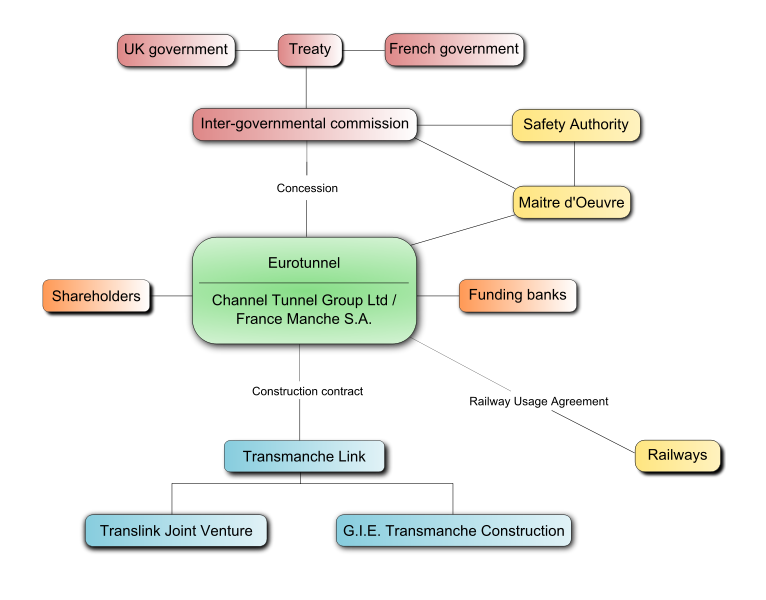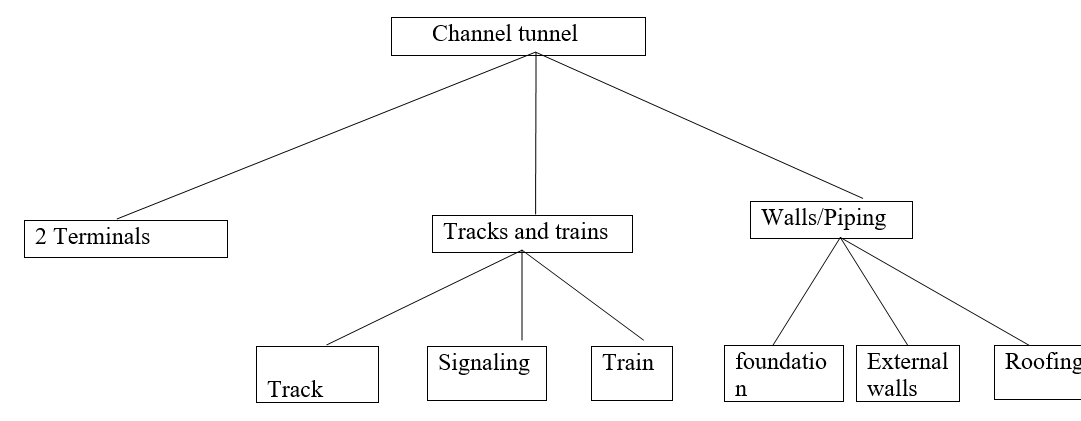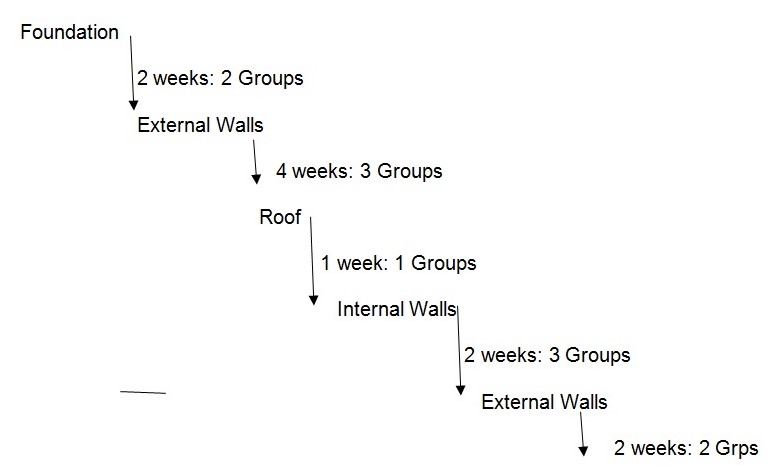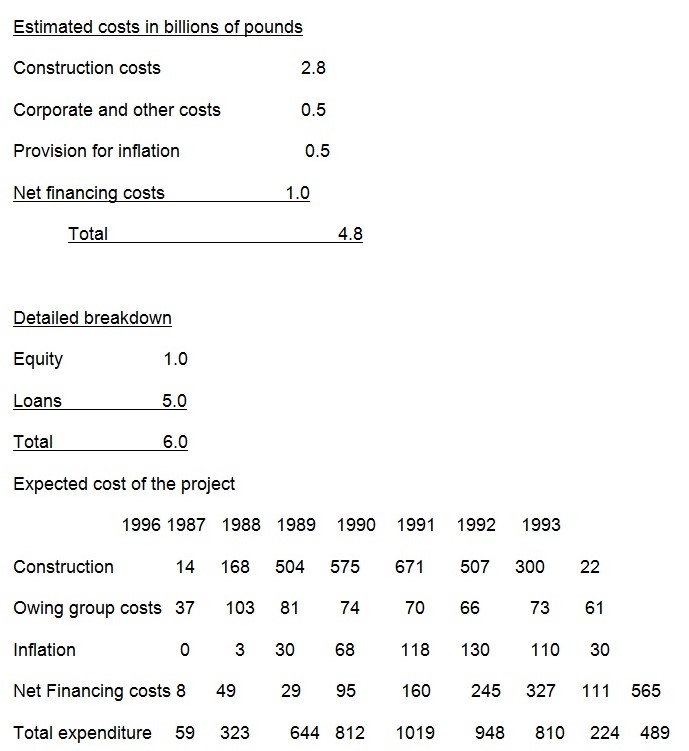Introduction
One of the marvels of modern engineering is the 50.5 km long undersea rail tunnel commonly referred to as the “Chunnel tunnel” linking northern France and the United Kingdom. The American society of civil engineers (ASCI) identifies the channel as one of the seven wonders of the modern world. The channel is a complex structure 7.6 meters in diameter with a 4.8 meters central service tunnel with a wide gestation time. The tunnel design ventilation and cooling system was served with ventilation shafts from both ends, with a minimum vertical gap between both tracks in a monolithic reinforced concrete allowing for track layout and flexible loading conditions from either side. A treaty signed by the French president and British prime minister in 1973 for the construction of the channel lapsed without ratification. In 1980 an Anglo-French report recommended the construction of the rail link in 1982. In 1985, bidders were invited to apply for the construction of the tunnel. Ten bidders applied. In 1986 the Eurotunnel System was pronounced the successful bidder and in the same year, a treaty sanctioning the commencement of tunneling was signed between the two governments. According to Singh (2005, p.47), the Eurotunnel could revert to both Governments in 2042.
Why a project
The principal definitions of a project incorporate definite start and end dates, resource optimization, planning, definite objectives and goals, constraints, value addition, and temporal endeavor. The design and constitution of the tunnel lasted from 1988 until 30th October 1990 when it was completed before starting operations in 1994 after a series of tests were conducted to ascertain its safety. In addition project management tools such as Program Evaluation and Review Techniques (PERT), goal and objective setting characterized it. Management could opt for approaches including the critical chain method, event chain methodology, PRINCE2, and process based management methodologies. These processes include initiation stage, its design and planning, execution, monitoring and control, and end stage. It had tasks and sub tasks indicating their start and end dates and who could be responsible for what. Overall, it had a managerial organizational approach indisputably qualifying it for a project. The undertaking was unique and capital intensive evidently characterized by strategic planning activities. Policies were defined, tactical plans on how to reach the set goals and objectives were outlined, cyclic plans that enabled project managers to deal with unforeseen events in the construction process were incorporated. Daily planning which dealt with running of the project on a daily basis was a key element and contingency planning which dealt with measures on how to handle emergency situations was incorporated.
According to Kirkland (1995, p.35), the project had identifiable development stages, was collective in the sense of involving various groups of people working on specific tasks, and was marked with complexity as it required complex engineering design skills and implementation. It had clearly defined objectives and goals to achieve. A project must have a definite purpose. Its purpose was to link the two land masses thus serve as a communication channel between them. Other aspects of an engineering project included feasibility studies to determine the undertaking’s viability.
Consistency with Organizational Business Plans
Successful projects must be consistent with organizational business plans. A business plan is an integral part of a successful plan. It is a written document that clearly guides the implementation team on program goals, status of the project, and implementation procedures. The project was consistent with organizational business planning since it had developed a business plan that served as a management tool both within the team members and the stakeholders. It’s the one through which managers of the construction teams could assign tasks (Kirkland 1995). The business plan provided the stakeholders with a comprehensive and precise picture of the proposed engineering construction project. The business plan outlined the key players and their respective competencies to implement the project successfully. It clearly provided information on key issues such as program description, needs assessment, operating procedures, staffing, governance, financial sources, and all other supporting data for its successful implementation. The project had a plan that identified its scope, resources for meeting the scope, project timeline, engineering expertise for quality assurance, and a detailed look at risks and uncertainties associated with its construction (Institution of Civil Engineers 1993).
The construction companies had skilled expertise required for the work, and the banks had the financial resources for funding the project (Kirkland 1995). In addition to that, the project had an organizational structure central to the construction of the project known as Eurotunnel. All the core functions of the project were coordinated by Eurotunnel.
In addition, the project was characterized by challenging issues of time. A successful project must remain within schedule and quality requirements must be met while the project budget must remain within the projected amount. There was positive relationship with the organizations that ran the project, focused, and reliable technical and strong management abilities.

Stakeholders and perspectives
Stakeholders of the project were two banks from the British side and five construction companies, while the French side had three banks and five construction companies in addition to the pool of 203 banks worldwide. The banks provided advice on financial issues in addition to securing loan commitments. This was a project wholly financed by private capital. According to the Institution of Civil Engineers (1993, p.7), the stakeholders were convinced that the project was technically feasible with all characteristics of an economically viable undertaking. A technical feasibility study conducted indicated that the construction could be carried out by companies that had appropriate technologies for its undertaking, and that the facilities were readily available for the project commensurate with the scale of the project. Stakeholders were convinced with the perspective that the project could be constructed within schedule, the facility could operate as per the plans, and estimates for the construction in addition to contingencies were within the planned limits. Economic feasibility studies indicated that the project’s net value was positive and that the supply and demand for the services offered by the engineering project could cover costs incurred in its construction and running in addition to generating profits for them. An analysis of the potential impact of the technology for construction and sustainability was conducted and found satisfactory. The shareholders clearly indicated that it was a worth project as it was deemed credit worth by assessing its inherent value, amount of equity for the shareholders, and expected profit generation in addition to third party pledges.
Scope -in-out
The project scope identified the goals and objectives to be achieved. It must contain the project objectives, project acceptance criteria, its boundaries, assumptions and constraints. In addition to a project charter, the scope provides information on scope planning, definition of interfaces, and controls. The objectives of the project were to construct a link between the United Kingdom and France and provide a communication channel (Institution of Civil Engineers 1993). The project acceptance criteria were conducted to determine its worth by conducting a research into its construction. In addition, the technological processes were deemed feasible on the scale of the project, while it was feasibly argued that it could generate sufficient funds for stakeholders, it was appropriately planned by conducting environmental impact assessments and risks and uncertainties could be shared equitably.
Work Breakdown Structure
To successfully assign tasks and sub-tasks, a work breakdown structure (WBS) forms an important element as a management tool. This breaks down work into manageable components. Therefore the framework provided by the WBS of the project was characterized by the project scope statement, its management plan, organizational management plan, and change requests that could be approved. The diagram illustrates how the project was broken down into manageable components under a management of Eurotunnel.

Schedule
Construction commenced in 1988 and lasted until 30th October 1990. According to the schedule for the project, tunneling was completed on time. This indicated that work had gone as planned, and the technology used was appropriate.
Kirkland (1995) illustrates the schedule as hereunder shown in the activity diagram.

Milestones
Deliverables were analyzed on a daily basis. Tasks were done as per the planned schedule despite various hurdles experienced in the construction process. Each task accomplished was verified against plans to determine if project successes went as planned. The deliverables were as per the activities illustrated below.
The foundation was constructed I two weeks, external walls in two weeks, then internal walls were constructed then external walls
The above numbers illustrate the flow of activities and deliverables of the project. Calculations based on the activities and critical path indicate that moving from activity (1-2)= 11 wks, (2-3)= 15 wks, (3-4)=12 wks, then until completion, the project took a total of 32 weeks.
Project completion phases were Ted Williams Tunnel at $1.3 million.
Network
Eurotunnel had an excellent network for its workers and there was clear evidence of excellent communication and protocol on both sides, from the French and British sides. Kirkland (1995) describes the network as illustrated in the diagram below.
This was the local control network as illustrated by (Kirkland 1995).
Gantt
Eurotunnel’s Gantt chart clearly indicated the start and Finnish dates of the project. The project went as scheduled as per the graphical representation. Gantt charts are vital project management tools.
Schedule Constraints
The engineering project however encountered several schedule constraints though tunneling was done on time. Inclusive were water leakages into the tunnel and at times drilling off line besides against the engineering plans.
Budget
By the time of its completion, cost overruns had reached an 80% cost overrun of the original estimated costs. According to Singh (2005), the cost had been estimated at 4.8billion pounds. Construction costs were estimated at 2.8 billion pounds, corporate and other costs at 0.5 billion pounds, provision for inflation at 0.5 billion pounds, and Net financing costs at 1.0 billion pounds. Thus a far cry from the actual cost estimates. A good project should have a budget overrun estimated at 25% of the estimated cost. This had a really potential impact on the project Singh (2005, p.1).
According to the report on the budget by Singh (2005, p.1), the flow is as indicated:

Budget constraints
Budget constraints were addressed by a rise in the value of the tunnel shares that sold at premium rates. In addition, thousands of shareholders invested in those shares which however decreased in value in the subsequent months (Singh 2005).
Quality Issues
The scale of the design was unprecedented. Quality issues characterized system throughput, environmental issues, safety related to passengers and their evacuation, and procedures for system’s operations and sustainability. In addition, the EIA of 1085 emphasized on design parameters that guaranteed environmentally sound project.
System analysis capability was conducted. A “quality assurance check” was conducted by stakeholders to familiarize themselves on the integration of quality issues once the system commenced operating. Such issues were integrated in the design of the tunnel by ensuring operational inputs and system outputs necessary to maintain the pace of development. Projects can go to waste and huge sums of money wasted if quality issues are not addressed. Thus a project quality audit should be conducted to determine any could be problems or anticipated problems in the project by identifying weak points acting as sources of problems and the integration of an inclusive approach to solving those problems according to the (Institution of Civil Engineers 1993)
Assessing the project’s objectives to analyze them to determine if the project could meet its objectives formed one of the quality issues. In addition to that, assessing the risks and uncertainties associated with the construction of the tunnel as discussed below, identifying project alignment with the laid down strategies and goals, reflecting on the realism of the project, identifying quality deliverables, assessing contractors for meeting their contractual obligations, assessing technological abilities and processes to certify if they met set standards, and if there were gaps and ways to address improvements were identifiable quality issues. Findings indicated a high degree of reliance on the quality of all aspects discussed above.
Risk Analysis
A successful project must be analyzed to determine its exposure to risks and uncertainties. Financiers are wary of investing in risky businesses. To avert scenarios of risky investments, the project managers, financiers and other stakeholders undertook to conduct risk analysis to identify the various risks associated with such capital intensive engineering project (Singh 2005)
Risks can be categorized into completion risks where the project may not be completed due to technical and monetary shortfalls such as inflation, high cost overruns or technical and financial infeasibilities. Technological risks may evolve from the inability of the current technology to perform according to specifications and the type of technology involved may be obsolete and inconsistent with ever changing technological innovations. It is possible to use obsolete technology when new and more efficient technologies have been invented. Raw material supply risks formed a critical part in conducting risk analysis. This is where raw materials may be depleted to the extent of becoming economically and environmentally unviable for use in the project’s lifespan. There was no significant threat to the availability of raw materials.
Another risk analysis conducted was economic risk. A project may be completed as scheduled and start operating at its capacity or below. The risk points to a situation where the services provided may run below its capacity therefore generating low revenues with a decrease in demand for the services. The revenues may generate marginal profits that may not satisfactorily meet the stakeholders’ expectations. Economic risk analysis identified efficient project management key to profit generation. Singh (2005, p. 11) noted that these risks were conducted to determine project’s viability. Other risks included force majeure risk where issues such as where catastrophes may impair the project’s operations or stagnate it for a long period of time, environmental risks which involved sensitive environmental issues, and political risks where a political jurisdiction might interfere with the project. Amelioration of such risks could stem from imposition of high taxes and overbrowning. Currency risk analysis was conducted to determine the impact of variations in exchange rates and other issues related to currency exchanges. In addition, interest rate swap risk analysis and other financial risks analysis were conducted. The project, based on the risks analysis, was deemed sound and viable.
Conclusion
Classified as one of the Seven Wonders of the World, the undertaking qualified as an engineering project due to inherent characteristics such as uniqueness, start and finish dates, feasibility studies, deliverables, organizational focus and work breakdown structure in addition to other aspects that distinguish a project from other undertakings. It was an engineering project.
References
Institution of Civil Engineers (Great Britain) 1993, The Channel Tunnel: Terminals, Part 2 Civil engineering. v.97 ; special issue 2. Web.
Kirkland, CJ 1995, Engineering the channel. St Edmondsbury Press, Bury St Edmunds, Suffolk.
Singh, P 2005, Project financing. Web.